52 Weeks of Historical How-To’s, Week 40: lace making
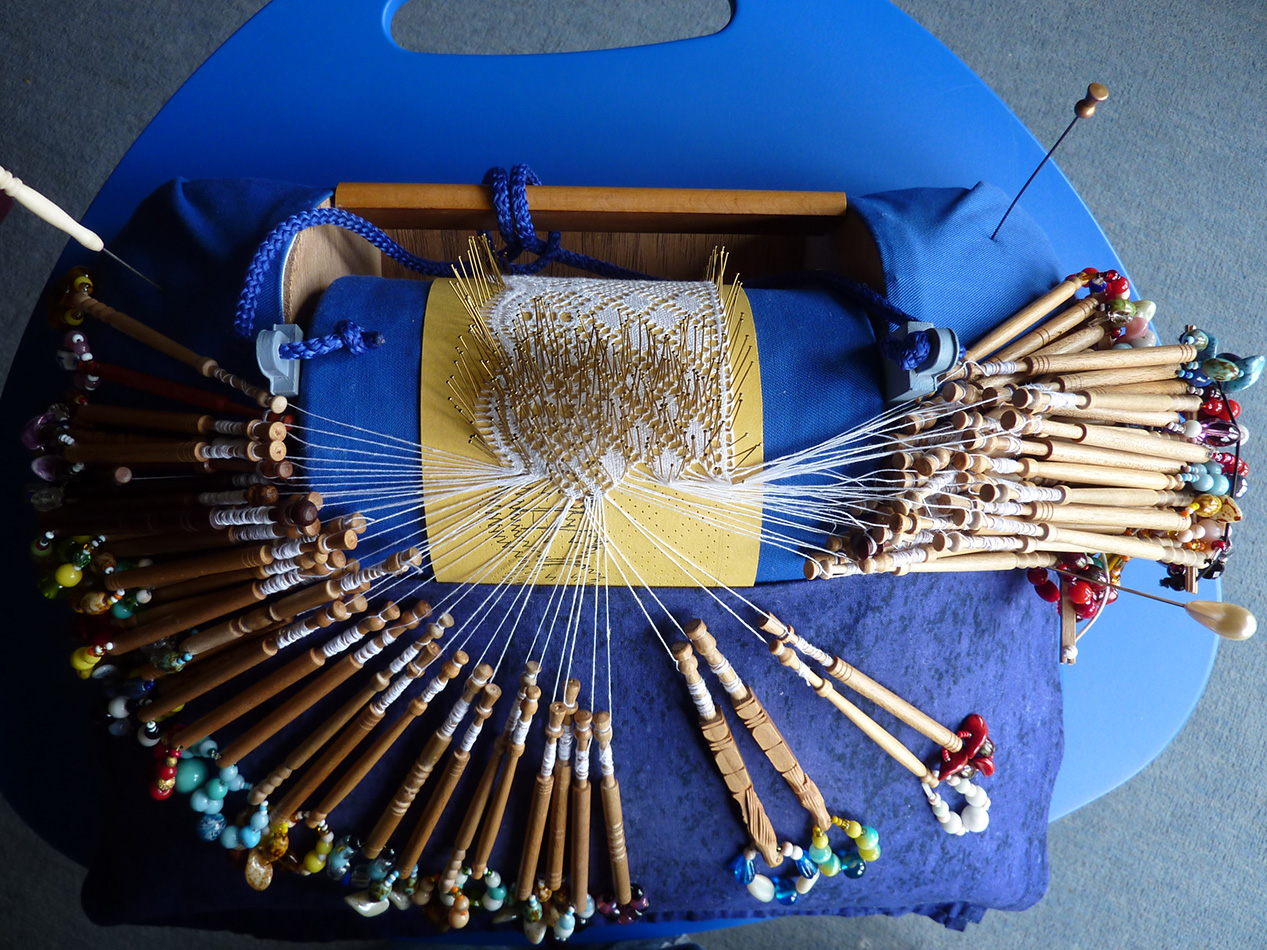
This week’s historical how-to relates to my own interest as a bobbin lace maker and a curiosity as to how my craft was represented in the Collections held here in St Andrews. The craft of Bobbin lace was never a thriving craft in Scotland though there were several attempts by the landed gentry to introduce the craft in to various areas of Scotland in the 18th century. The only area where lace was introduced and continues to this day (though not as a commercial venture) is New Pitsligo. Lace was also introduced to Ayrshire and Edinburgh several times through the 18th and 19th centuries but none of these industries lasted very long – usually they faded out when the patroness died or lost interest in the project.
A search though the collections to see if there were representations of lace makers, lace or the patterns/prickings of the craft of bobbin/ stick or bone lace produced very little.
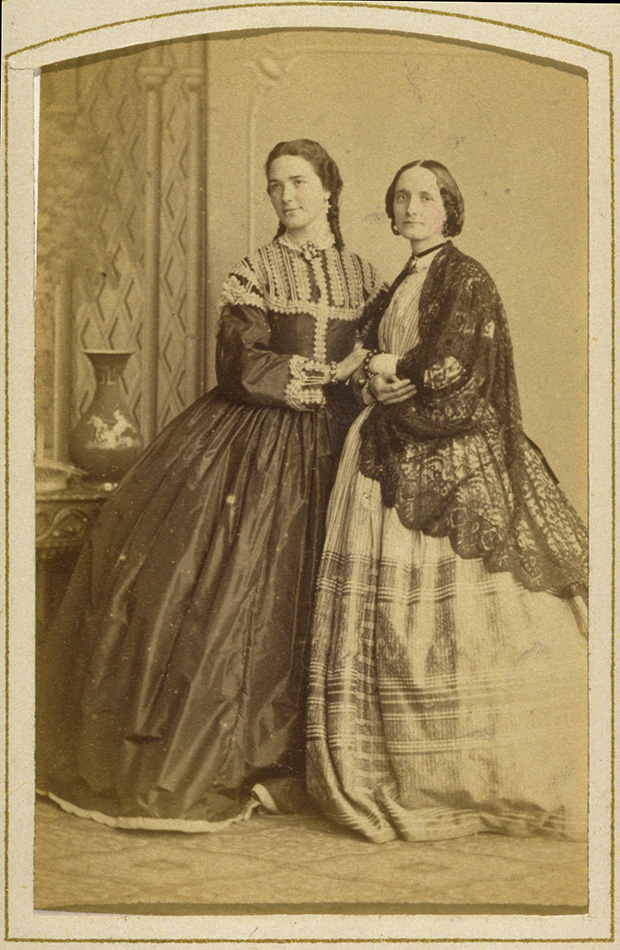
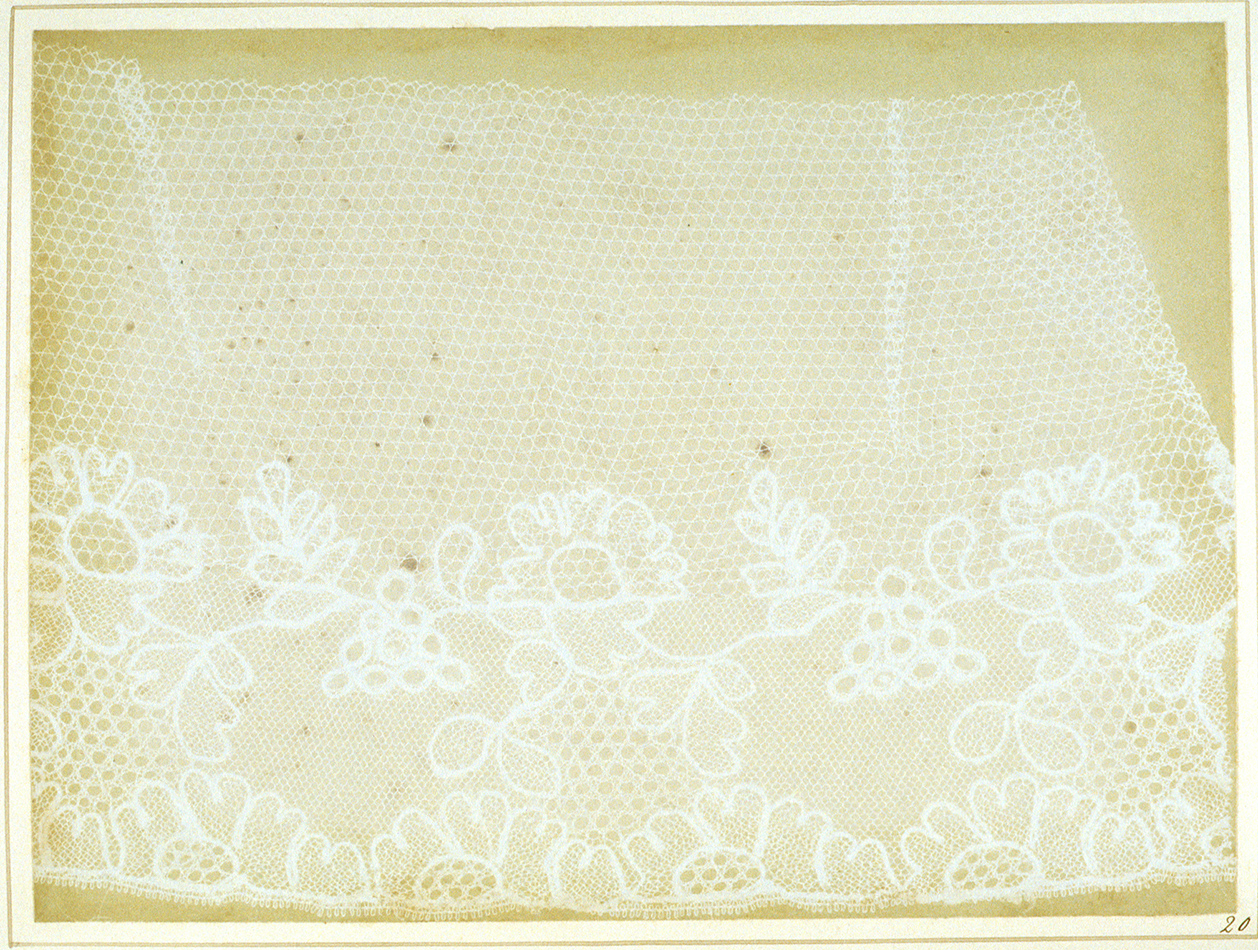
Within the photographic collections there are many glimpses of lace trimmings on the dresses being worn by the women in their portraits but much of this lace is either needlelace or crochet or machine made. One of the best images of a piece of lace is also one of the earliest photographs taken and is a photograph, by William Fox Talbot, of a wide lace edging (probably his wife’s) but this is a piece of machine lace with hand run gimps (thick thread outlining the floral patterns). The only image of actual lace makers is from the JEA Steggall collection and this photograph taken in 1906 shows the young girls of Burano sitting in the street with their large bolster pillows on their knees, unfortunately the lace on the pillows is covered to protect it from dirt and so is not visible.
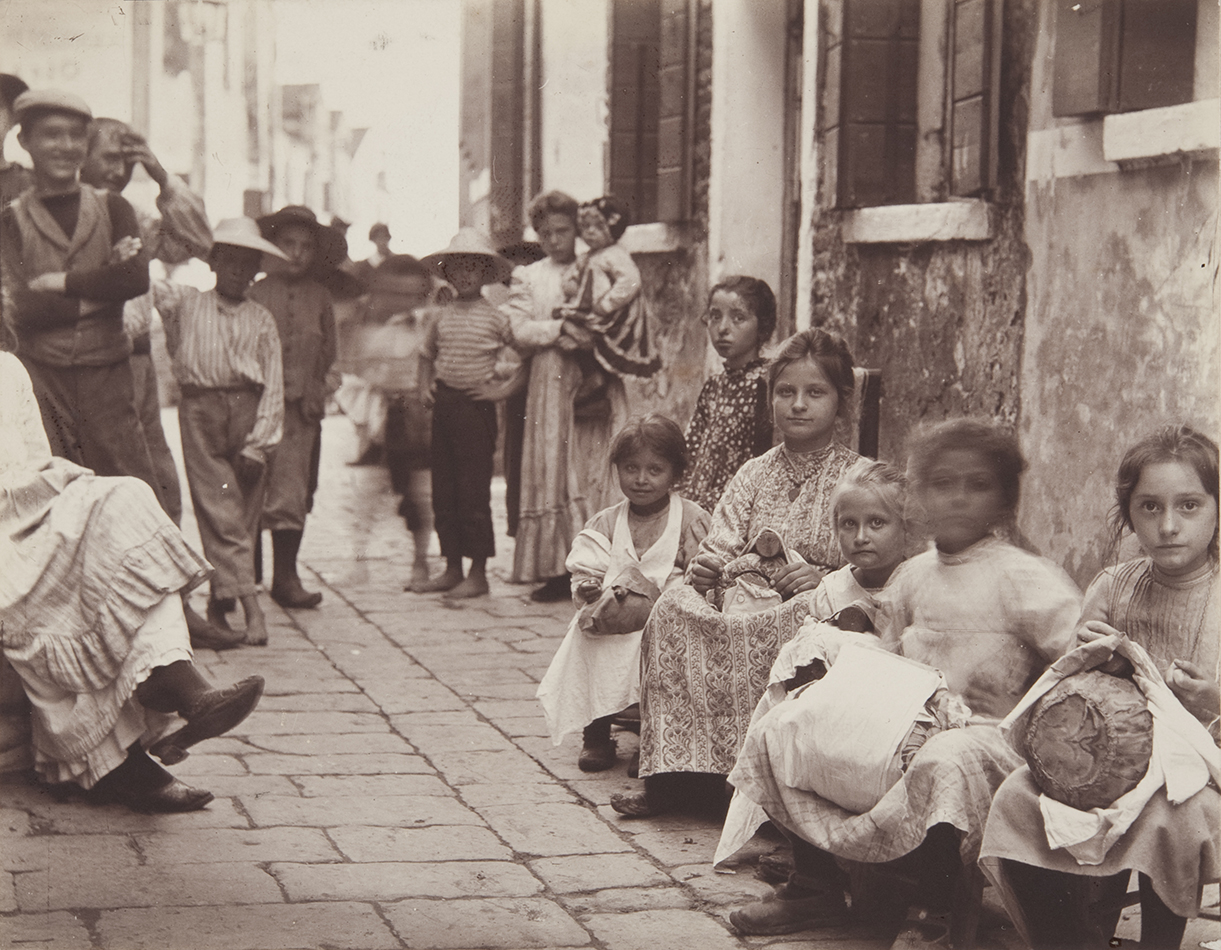
The Manuscript collections have many pages of instructions and even samples in dairies, notebooks, scrapbooks etc. that young women of the 19th and early 20th centuries but these all relate to knitted or croqueted lace trimmings and shawls.
Finally among the Rare Books collections I discovered a 2nd edition of “A History of Lace” by Mrs Bury Pallister. This book covers the development of lace from earliest times up to the late 19th century when the book was first published – it covers the major lace producing areas in Europe and the lace produced in each area. The book is a landmark volume in the description of lace history and has recently been republished as original copies become hard to find. Searching the book I found chapters on Scotland and Scottish lace with an illustration of a piece of Hamilton lace.
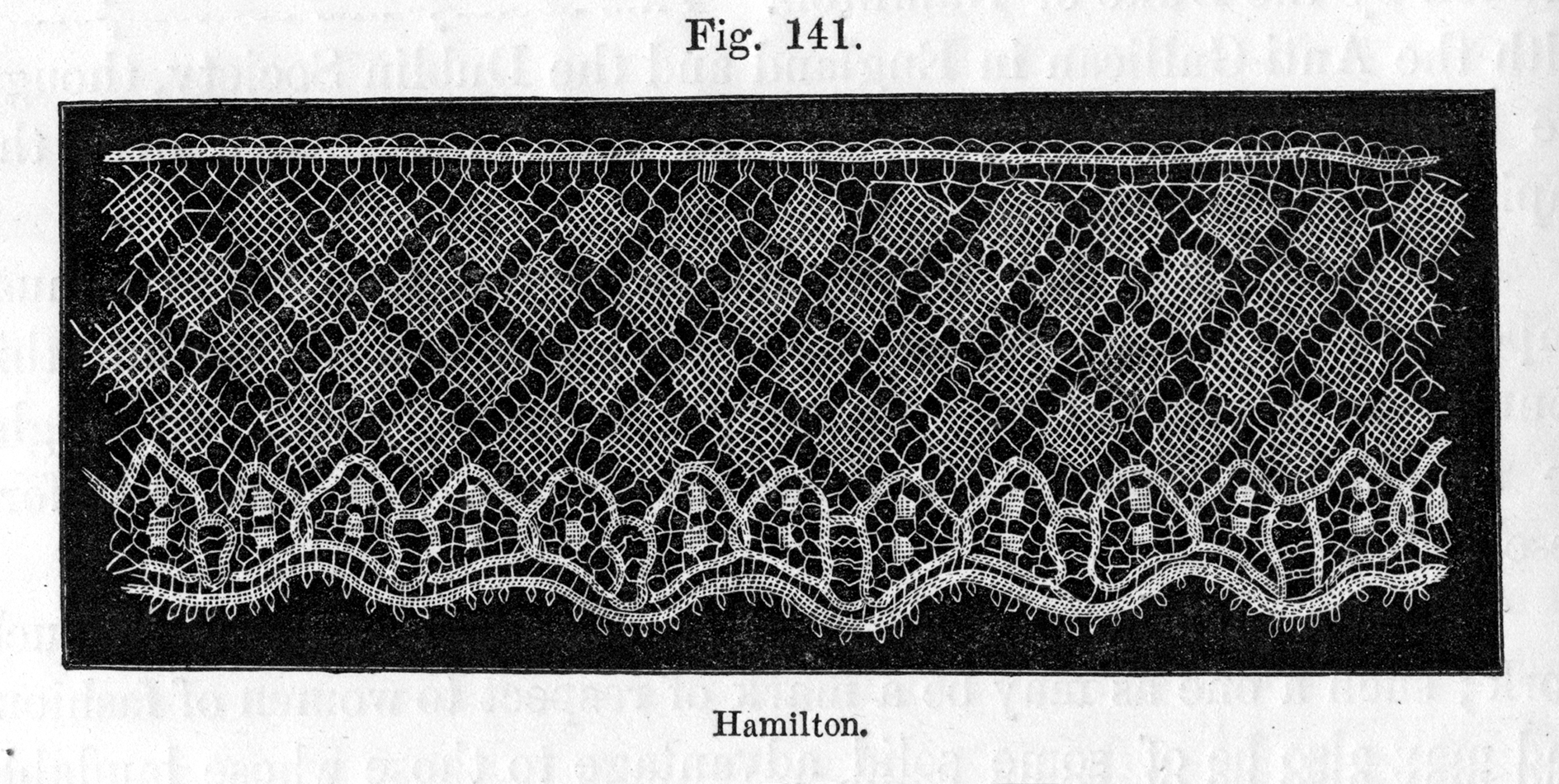
Hamilton lace was introduced, in the 1750s by Anne, Duchess of Hamilton, who brought over a native of France to teach it to the poor girls on her husband’s estate, giving them a respectable occupation. It was also esteemed as fully more a noble than a plebeian thing and many middle class females were taught it at school, it being noted as a “useful art”. Initially Hamilton lace was held in high repute among the higher classes, but eventually went out of fashion and by 1778 lacemaking ceased. By the early 1900s books on the history of lace refer to Hamilton lace as
“never having any artistic value; it was made of coarse thread, a weary iteration of the old lozenge pattern of prehistoric origin being the Scotch idea of beauty and suitability for design in lace. It was never used for dress purposes, and was spoken of in disparagement by connoisseurs as “only Hamilton.”
(Palliser p375).
Using this picture of the lace I studied it in preparation to making the pricking (pattern) from which I would then make the actual lace and discovered that the picture was not a photograph but a drawing and while the artist had made a reasonable representation of the lace there were many inaccuracies and technical impossibilities – the cloth stitch trails looped round in such a way that meant to work them as shown would require bobbins being added and removed quick succession, possible but unlikely as the lace was designed to be made in long lengths for sale so that time consuming techniques (such adding and removing bobbins) would not have been used – the lace would have been designed to be simple and easy to make. This meant that the picture is not a true depiction and would have to be interpreted to produce a workable pattern.
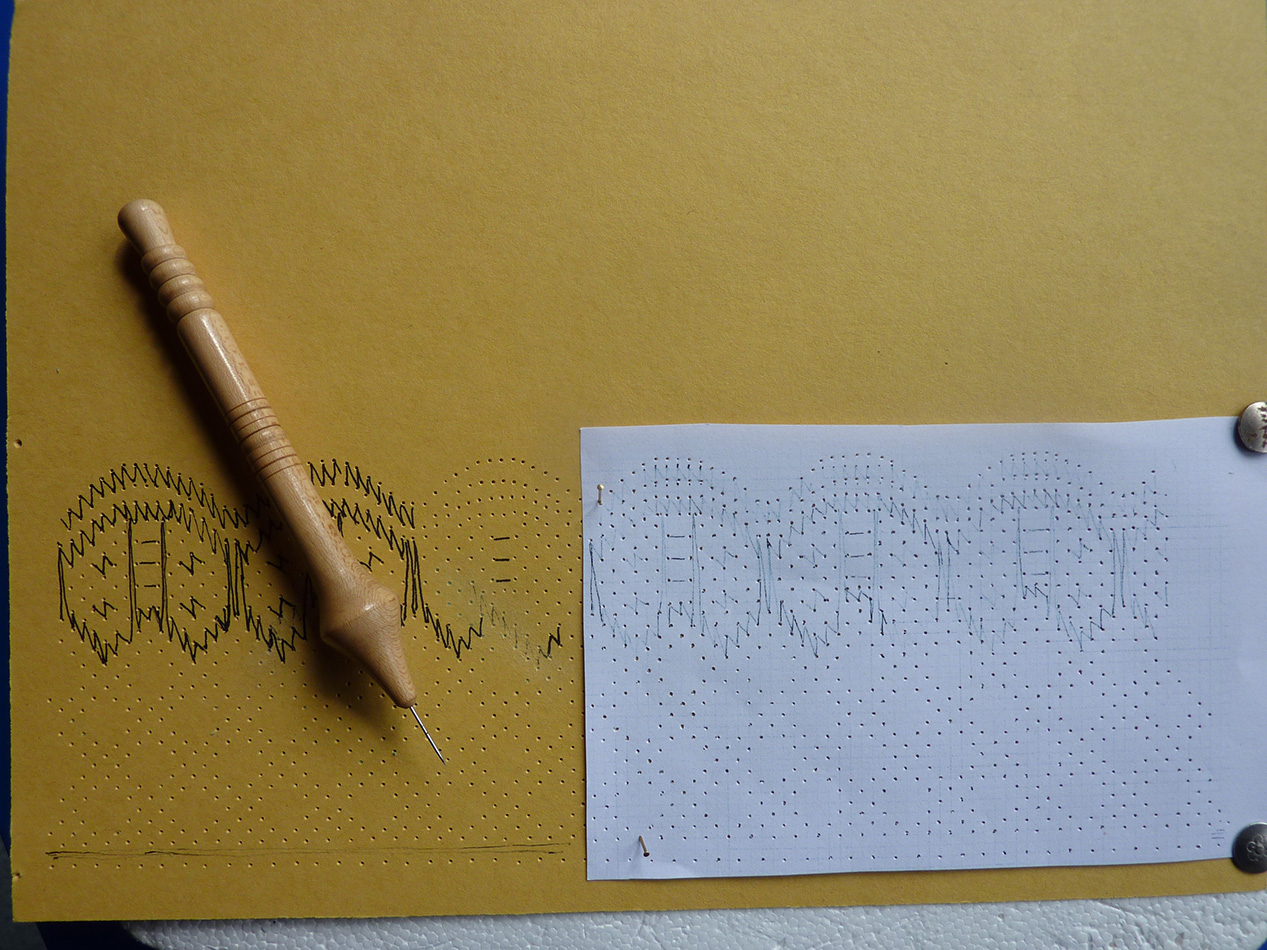
Taking a section of the lace from the centre a pattern draft was made adjusting the design so that the cloth stitch trails flowed through the lace rather than constantly stopping and starting. The draft was then reduced to working size and pricked onto card and mounted on a roller pillow ready to start making the lace sample. The sample was to be an interpretation of the Hamilton lace as depicted in the book, this meant that parts of the strip would show several ways of working the pattern each based on different stitches and techniques that would produce the desired effect.
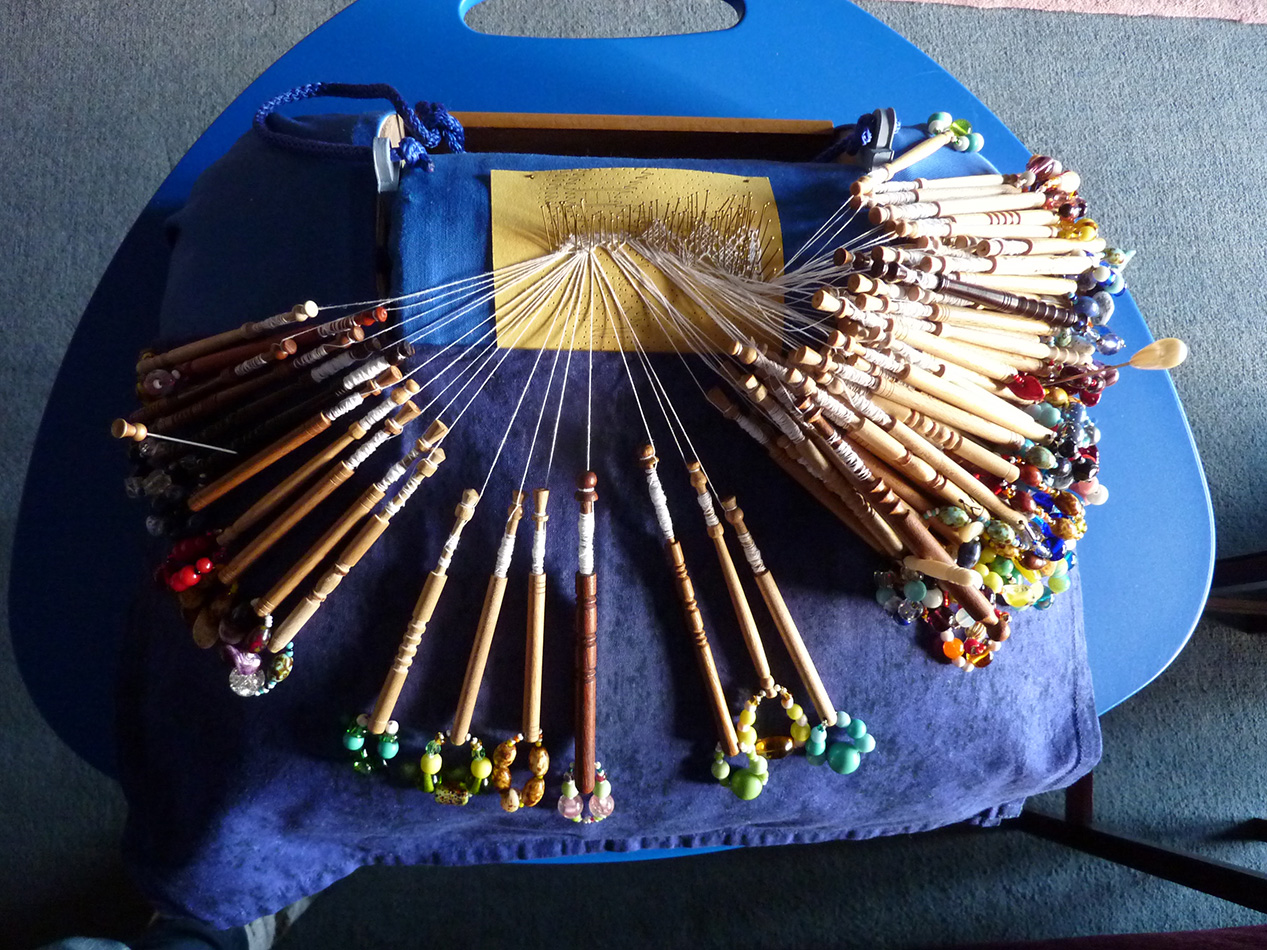
The top edge, the footside – which is where the lace attached to the garment, was worked and as Torchon footside. This forms a firm edge which can be easily sewn onto fabric. The main diamond ground was worked in several different ways to first replicate the picture and then replicate the ground as found in surviving pieces of Hamilton Lace. Working from the left the ground is first worked with the bobbins weaving through each other to form an open lattice work as shown in the picture, this forms a fairly open and loose shape which would not last being worn or washed. The second ground section was worked with one pair of bobbins weaving back and forth across the diamond producing a firm and cloth-like shape. Finally one bobbin was woven back and forth through the diamond producing a firm but open lattice shape. The butterfly-like motif along the base, the headside, was worked with two cloth stitch trails that joined across forming the outline shape and the wings were filled with small diamonds of cloth stitch set in Torchon ground. The lower edge was worked with a thin trail and large picots to from the decorative looped edge shown in the picture.
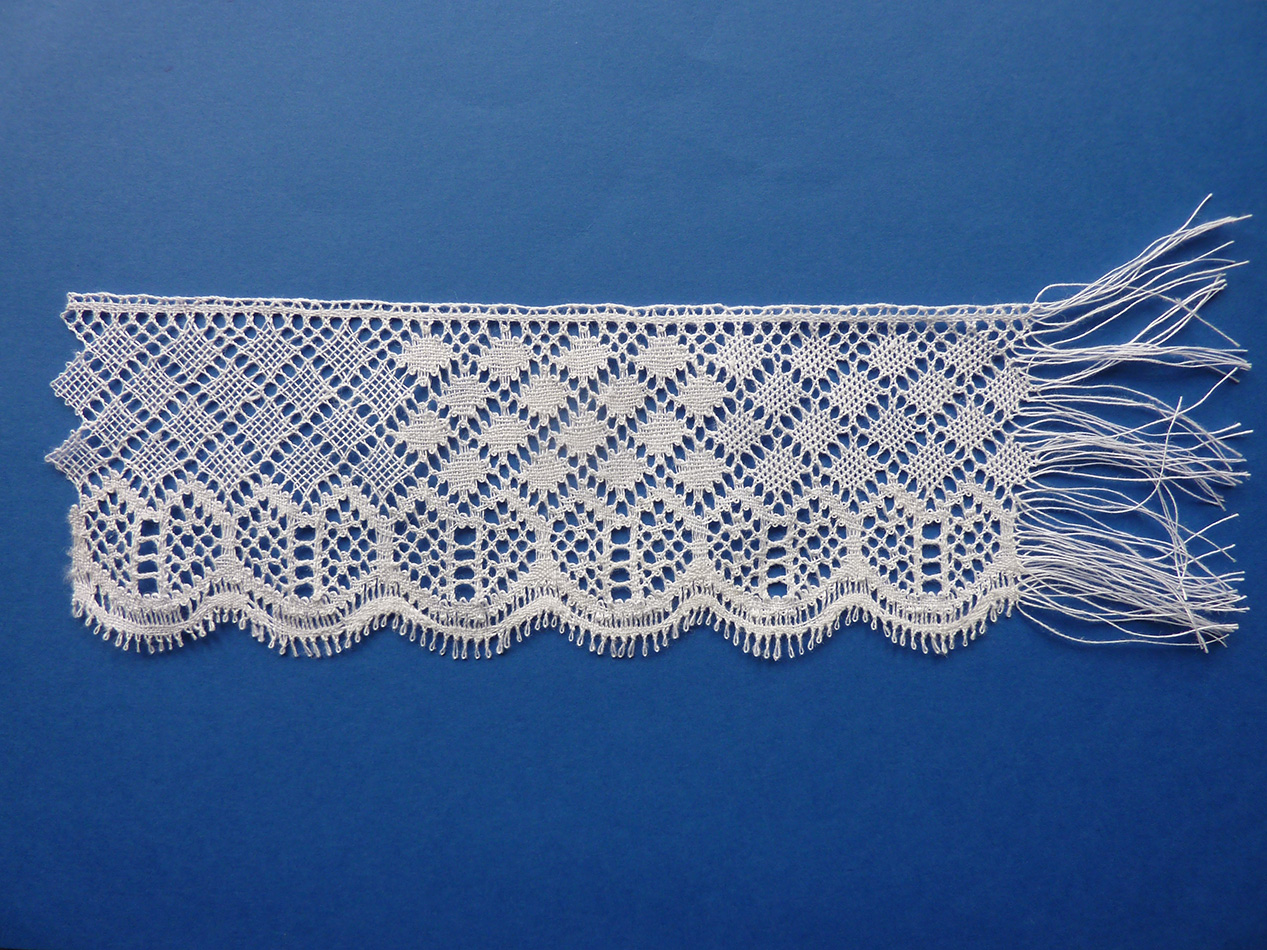
Having worked using Torchon techniques, as the lace appeared to be based on a 45 degree grid, I was then shown a photograph of a Hamilton collar which was in the museum in Harrogate. This appears to show the use of Buckinghamshire point techniques – especially for the headside edge – with gimps (thicker thread) outlining the design/motif.
If I was not attempting to reproduce the lace as shown in the book but using the picture as a design idea and I would use Buckinghamshire point picot headside and use gimps, rather than the cloth stitch trails, to form the butterfly motifs with tallies for the wings spots to give a much lighter and more delicate lace. It would also probably be a more correct replication of Hamilton lace than the picture in the book.
– Jane Campbell
Research Cataloguer and Database Administrator
The lace was made using 37 pairs of bobbins wound with a linen thread – Fil a Dentelle 50
References: A history of lace by Mrs. Bury Palliser. London : Sampson, Low, Son, and Marston, 1869
Is there ANYTHING you clever people can't do? Such a gifted bunch of people!
[…] Tweet führte zum Blog der Spezialsammlungen der schottischen St. Andrews University, in dem in einer Serie “52 weeks of historical how-to’s”, also 52 Wochen lang […]
Beautiful. I'm heading back to France for a few months and hope to start lace making. I will be a short drive from the Puy-en-Velay, renowned for their lovely lace.